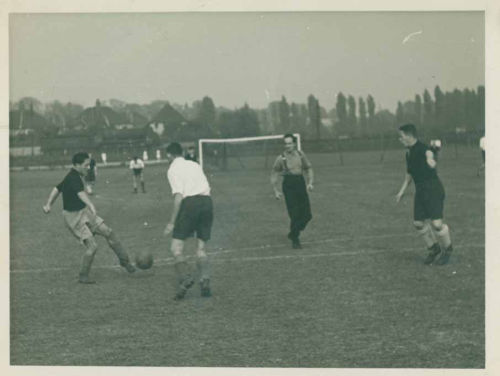History Main Page
19th Century & Pre-War : Inter-War : Post-War
Record Results : Timeline : Honours & FA Cup Results : FA Cup
AFA Cup Results : Ground : Other Sports & Clubs : Harriers Athletic Club
Quintin Hogg : Arthur Kinnaird
Polytechnic Football Club have been based at many grounds since the club was formed in 1875, but the present facility at Chiswick has been home to the numerous teams since 1906.
The initial location at which the club – known at that time as Hanover – met was the often-referenced Primrose Hill in Regent’s Park, on a pitch adjoining that used by the amateur club that would later become Tottenham Hotspur.
In 1878, thanks again to the money of founder and philanthropist Quintin Hogg, Hanover made use of its first permanent ground at The Limes in Barnes, West London.
Five years later Hogg hired 27 acres of land at Merton Hall in Wimbledon for hosting football, cricket and athletics events. The club remained there for several years until the 1890s, when, by then known as Polytechnic – after the educational establishment Regent Street Polytechnic formed by Hogg – it played matches at Paddington Recreation Ground.
Following Hogg’s untimely death in 1903, the 40-acre site at Chiswick was purchased by public appeal and the Quintin Hogg Memorial Sports Ground opened in 1906.

Football Being Played At the Quentin Hogg Memorial Ground
The club is far larger than its football teams, however; plus in the 19th century and the first half of the 20th the various sports that were practiced under its banner were intimate, as shown by the regular publication of the Polytechnic Magazine, formerly known as Home Tidings. This also chronicled the institution itself, which engaged in educational, practical, humanitarian and religious activities.
Hogg was initially based at York Place before moving to substantial premises on Regent Steet in 1881, giving his fledgling organisation part of its name. He immediately converted the Great Hall there into a gymnasium for its sport-inclined members, while also creating a rifle range. In 1884 he added an indoor swimming pool.
The first association with Chiswick came in 1888 when he bought a boathouse on the Thames for use by the rowing club. After his death, the adjoining land was purchased in his memory – and many teams, including the footballers and cricketers, still play there to this day. Other clubs such as the Harriers have since moved away.
A founding member of the cricket club, George Ogilvie, also played in the very first Hanover football side alongside such famous names as Arther Kinnaird, winner of five FA Cups. Ogilvie, who went on to serve as a club official for 70 years, built the scoreboard that stands on the corner of the first-team football pitch.
During the Great War of 1914-1918 Chiswick was transformed into a rest camp and shooting range for soldiers.
In 1936, in light of the massive success of the other arms of the club such as the cyclists, athletes, fencers, boxers and swimmers, a stadium was planned to hold 10,000 spectators, with 1,000 seated in a grandstand.
The Harriers in particular were to benefit from the Chiswick Stadium, which was intended to become a primary athletics venue in London: the White City stadium which held the 1908 Olympics was too vast while Stamford Bridge no longer had a running track.
The facility, located behind the current leisure centre/gymnasium, was popular but ultimately became something of a white elephant: this was due to the elimination of cinder tracks in preference of new technology – the all-weather surfaces seen at stadiums such as Crystal Palace today.
By the late 1970s the Harriers no longer hosted major athletics events and moved to Kingston.
